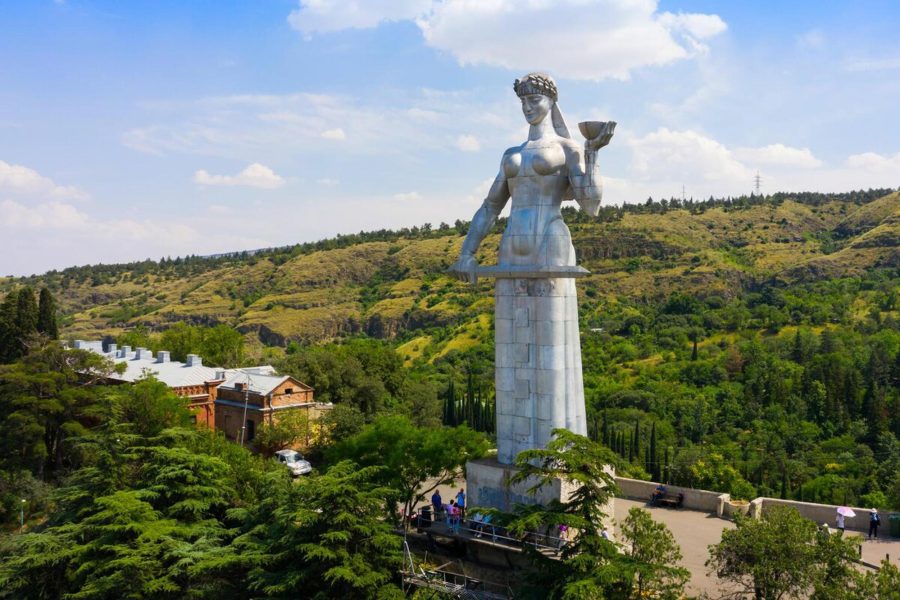Gagi Fortress: The Lost Capital of a Forgotten Kingdom
Sprawling across a low hill on the vast plains of Marneuli, the ruins of Gagi Fortress are the ghost of a once-great city. This was no mere outpost; Gagi was a major political and military center, for a time even serving as the capital of the Armenian Kingdom of Tashir-Dzoraget. It was a prize fought over by the great powers of the medieval Caucasus: Georgian kings, Seljuk sultans, and Mongol khans. Today, its extensive ruins offer a powerful glimpse into the epic history of this contested borderland.
The story of Gagi is one of power and strategic importance. It rose to prominence in the 11th century as a key stronghold of the Gageli noble family, who were powerful vassals of the Georgian crown. Its location on the plains made it a center for controlling the lucrative trade routes and the surrounding fertile lands. The fortress was enormous, a fortified city with a strong citadel, outer walls, and a sprawling settlement. Its capture by King David the Builder was a crucial step in securing Georgia’s southern borders.
Exploring Gagi today is an exercise in imagination. The fortress is heavily ruined, its walls and towers now low outlines on the landscape. But the sheer scale of the site is still evident. As you walk the perimeter, you can trace the lines of its powerful defenses and imagine the city that once thrived here. This was a place of great battles and high politics, a cosmopolitan center where different cultures and armies met and clashed.
The atmosphere is one of quiet grandeur and historical weight. The wind sweeps across the open plains, whispering through the fallen stones. Unlike a mountain fortress, Gagi’s strength was in its massive walls and the armies it could project onto the surrounding flatlands. It was a different kind of power, a power of the plains.
Gagi Fortress is a must-visit for anyone fascinated by the grand sweep of medieval history. It’s a place to reflect on the rise and fall of kingdoms and the shifting sands of power in the Caucasus. Though ruined, it remains a testament to a time when it was one of the most important cities in the region.
🗺️ Geography & Location
Exact Location:
The ruins of Gagi Fortress are located in the Marneuli Municipality, near the modern village of Aghmamedlo, on the plains near the Debed River.
Strategic Placement:
It was a classic plains fortress-city, controlling the vast, fertile plains and the crucial trade routes that ran through them, connecting Georgia with the southern Caucasus.
Coordinates:
Approximately 41.2833° N, 44.8500° E.
📖 History & Background
Date of Construction & Origins:
Flourished in the 11th-13th centuries. It became a prominent city after the decline of Samshvilde.
Historical Role:
A major political and military center. It served as a capital for the Kingdom of Tashir-Dzoraget and was a key stronghold of the Gageli-Mkhargrdzeli family, powerful nobles in the service of the Georgian crown.
Important Events:
It was a focal point of the Georgian-Seljuk wars. King David the Builder captured it in 1124. The city was ultimately destroyed by the Mongol invasions.
Status:
An important archaeological site and cultural heritage monument, now in ruins.
🏗️ Architecture & Design
Materials Used:
Primarily well-dressed local stone and brick.
Key Features:
- Fortress-City Layout: The extensive ruins show a complex layout with a central citadel and outer city walls.
- Powerful Fortifications: Despite being ruined, the thickness and scale of the foundation walls are still impressive.
- Archaeological Potential: The site contains the buried remains of palaces, churches, and urban structures.
Unique Aspects:
Its role as a major plains capital and its connection to the powerful Gageli family make it a site of immense historical importance, distinct from the more common mountain fortresses.
🌟 Cultural & Tourist Significance
Epic History:
Gagi is a tangible link to the epic struggles between the great empires and kingdoms of the medieval Caucasus.
Off-the-Beaten-Path Exploration:
For history enthusiasts, the extensive and little-visited ruins offer a profound sense of discovery.
🚶 How to Visit
Best Time of Year to Visit:
Spring and autumn are the most comfortable times to visit, avoiding the intense summer heat of the plains.
Accessibility:
Moderately accessible. The ruins are in an open field and can be reached via local roads. Exploring the large site requires a good amount of walking.



Leave a review